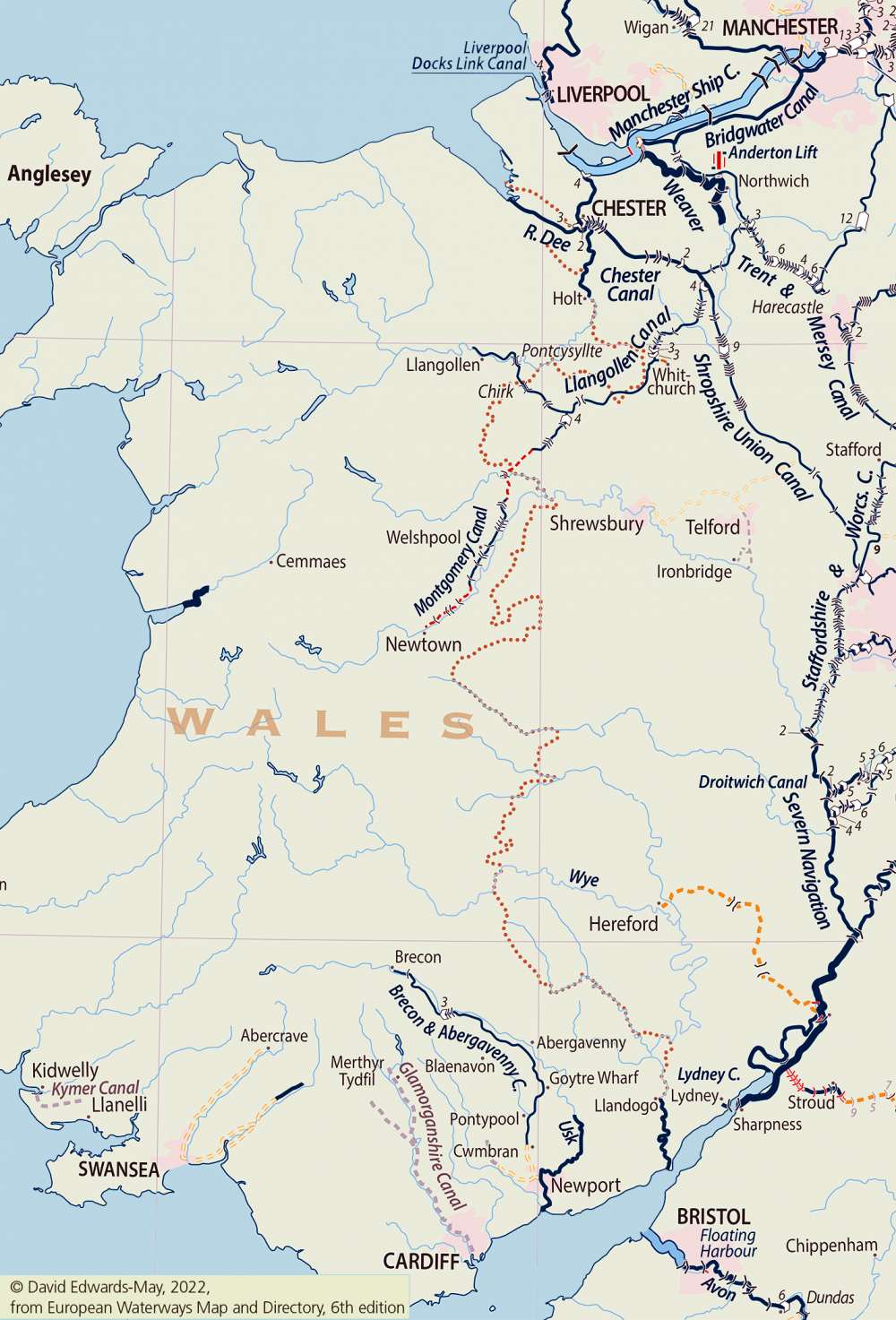Welsh canals map (click to open)
Llangollen Canal
- Boat length : 70’ or 21.34m
- Boat width : 6’10” or 2.08m
- Draft : 2’3” or 0.7m
- Headroom: 7’ or 2.13m
Known as the Llangollen Canal since the 1980s, this 46 mile waterway complete with 21 locks was originally part of the Ellesmere canal and after that swallowed up in the Shropshire Union. It was intended to be part of a larger project which was never completed and it now runs from Llangollen in Denbighshire over the border to Hurleston in South Cheshire. The Llangollen held its own against the dreaded railways until the beginning of the 20th century, but after the First World War very little traffic remained and navigation was formally abandoned in 1944. However, enthusiasts remained aware of its extraordinary potential and continued to campaign on its behalf, so that when the Traffic Act was passed in 1968, the canal was designated as an official cruise way. It has become one of the most popular in the entire network and in 2009 a stretch of it which included the Pontcysyllte aquaduct, 126’ high and capable of carrying 1.5 million litres of water over the River Dee, was given UNESCO World Heritage status.
If hauntingly photogenic ruins are your thing, then beat a path to Castell Dînas Ban, a 13th century castle that was built on the site of an Iron Age fort. On the other hand, if you have a taste for Regency scandals, then Plas Newydd is a must. It is where the legendary Ladies of Llangollen, Miss Sarah Ponsonby and Lady Eleanor Butler, set up home together as a couple, causing such a scandal that London society had a collective fit of the vapours.
Montgomery Canal
- Boat length : 72’ or 21.95
- Boat width : 7’ or 2.13m
- Draft : 3’11” or 1.2m
- Headroom : 6’ or 1.83m
The canal, nicknamed the Monty, was originally built to transport limestone from the quarries at Llanymynech. Construction work began in the mid 1790s and was finished in 1819 but the advent of the railways meant that there was competition over freight transport and the canal struggled to cope, so that by the 1870s it was barely covering the cost of its maintenance. The Montgomery was formally closed by Act of Parliament in 1944, but as interest in using the waterways for leisure purposes increased, projects to restore this beautiful canal were introduced. The newly renovated northern end was opened in 1987 and work has been ongoing since then, with additional sections coming on stream In 1996 and 2003. Nowadays there are two distinct sections: the first is 7 miles long and contains 8 locks and passes from Frankton to Gronwyn , and the second meanders from Arddleen to Berriew over 12 miles, passing through 11 locks. There remain ambitious plans to join up these two sections and restore the canal to its former glory.
The Montgomery canal is the most delightful way to explore the Welsh Marches. It passes through sublimely beautiful countryside and is bordered by many nature reserves. The canal itself is a site of Special Scientific Interest and also a Special Area of Conservation because it contains a unique trove of aquatic plants, so if being out in the wilds and enjoying all that nature has to offer is what makes you happy, a trip on the Monty will tick every box. If you work up a thirst as you go along, then we recommend a quick visit to Monty’s Brewery in Montgomery, producers of award winning golden ales – they even have a gluten free option!
British-Irish waterway regions – Northern | East Midlands | West Midlands | Welsh | Southern | Scottish | Irish
French waterway regions – North | North-East | North-Central | West | Centre | South-East | South | South-West

